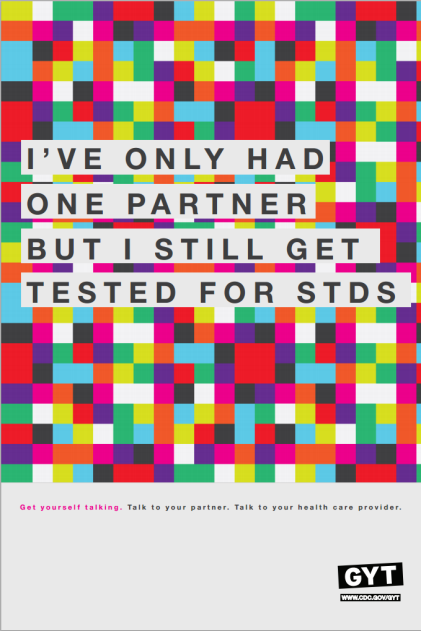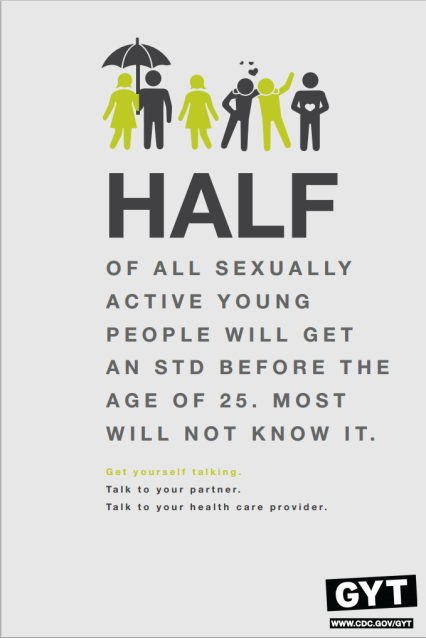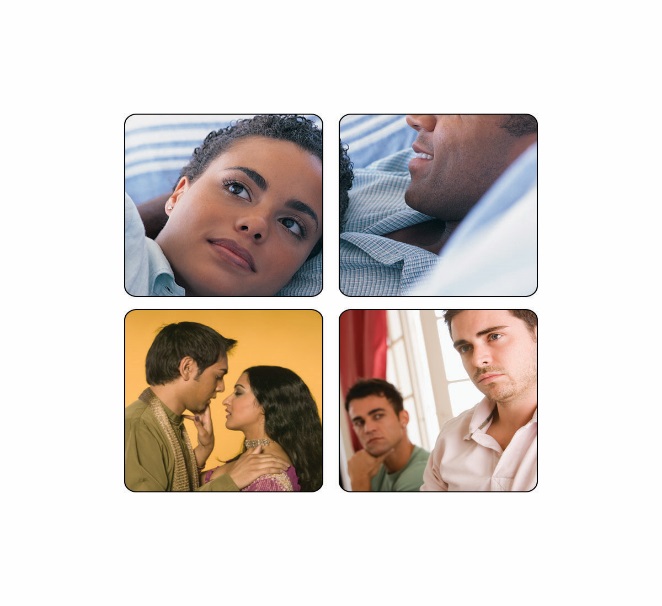Stakeholder Analysis Adolescent Online Survey
Generic Clearance for the Collection of Qualitative Feedback on Agency Service Delivery (NCHHSTP)
Revise Att1 Stakeholder Analysis Adolescent Survey
MSM AYA Stakeholder Analysis Survey
OMB: 0920-1027
Form Approved
OMB No. 0920-1027
Expiration Date: 08/31/2017
Public reporting burden of this collection of information is estimated to average 10 minutes per response, including the time for reviewing instructions, searching existing data sources, gathering and maintaining the data needed, and completing and reviewing the collection of information. An agency may not conduct or sponsor, and a person is not required to respond to a collection of information unless it displays a currently valid OMB control number. Send comments regarding this burden estimate or any other aspect of this collection of information, including suggestions for reducing this burden to CDC/ATSDR Reports Clearance Officer; 1600 Clifton Road NE, MS D-74, Atlanta, Georgia 30333; Attn: OMB-PRA (0920-1027)
Attachment 1: Stakeholder Analysis Adolescent Online Survey
The goal of this survey is to gather feedback about current health information products to determine if they meet the needs of the public. We would like your feedback on informational materials produced by Centers for Disease Control and Prevention (CDC) for young people. If you are aged 15-24, please help us by taking this online survey. This survey should take about 10 minutes to complete. A 7th grade reading level is required. If you have any questions about this survey, please contact James Bethea (jbethea@danya.com), who is in charge of this study.
The CDC is a federal public health agency that provides health information to the public as part of its mission to protect America from health, safety and security threats. This survey is sponsored by CDC’s Division of STD Prevention.
The CDC recognizes that your time is extremely valuable and appreciates your participation.
Please click here [insert link] to take this survey.
DSTDP Adolescent Survey
What is your gender?
Male
Female
Transgender
Prefer not to answer
Please indicate your age:
15-17 years old
18-21
22-24
None of the above
What is your sexual orientation?
Straight/Heterosexual
Gay or Lesbian
Bisexual
Something else
I am not sure
Prefer not to answer
What is the highest level of education you have completed?
Less than high school
Some high school
High School Graduate
Some college
Trade/technical/vocational training
College graduate or more
Military
What is your race/ethnicity? (Please select all that apply)
American Indian or Alaska Native
Asian/Pacific Islander
Black or African American
White
Hispanic or Latino
Other
Prefer not to answer
If you wanted information about STDs from CDC, in what format would you like to receive this information? (Please select all that apply)
Website
Podcast
Video
Monthly newsletter
Text message
Printed fact sheet
Blog
Hotline
Social media
I do not want to receive STD information from CDC
Have you ever used any of the formats to learn about STDs from CDC (select all that apply)?
Website
Podcast
Video
Monthly newsletter
Text message
Printed fact sheet
Blog
Hotline
Social media
I have never looked for STD information from CDC
GYT Posters
The GYT: Get Yourself Tested campaign encourages young people to get tested and treated for STDs (including HIV). Please let us know how you feel about the GYT poster designs presented in questions 8-11.

Image 1
8. What are your first impressions of this poster (image 1)? (Select all that apply)
I like it
I do not like it
Attention-getting
Distracting/confusing
Difficult to read
Easy to read
I want to learn more
I don’t want to learn more
Offensive
9. After seeing this poster, what actions would you take? (Select all that apply)
Visit the website
Do an internet search about the campaign
Look for more information about STDs
If involved in a sexual relationship, talk to my partner(s) about STDs
Get tested for STDs
Talk to a doctor (or other provider) about STDs/testing
I wouldn’t take any specific action
Other

Image 2
10. What are your first impressions of this poster (image 2)? (Select all that apply)
I like it
I do not like it
Attention-getting
Distracting/confusing
Difficult to read
Easy to read
I want to learn more
I don’t want to learn more
Offensive
11. After seeing this poster, what actions would you take? (Select all that apply)
Visit the website
Do an internet search about the campaign
Look for more information about STDs
If involved in a sexual relationship, talk to my partner(s) about STDs
Get tested for STDs
Talk to a doctor (or other provider) about STDs/testing
I wouldn’t take any specific action
Other
The next set of questions refers to images and text found on a CDC Fact Sheet about STDs.

Image 3
12. Imagine you saw this on a fact sheet about STDs for teens and young people. Would you say that image 3: is _______: (Please select all that apply)
Stereotypical
Is meant for people like me
Interesting
Stigmatizing
Attention-getting
Outdated
Offensive
13. How appropriate do you think this image is for a STD fact sheet for teens and young people?
1 2 3 4 5
Very Appropriate Appropriate Neutral Inappropriate Very Inappropriate

Image 4
14. Imagine you saw image 4 on a fact sheet about STDs for teens and young people. Would you say that this image is _______: (Please select all that apply)
Stereotypical
Is meant for people like me
Interesting
Stigmatizing
Attention-getting
Outdated
Offensive
15. How appropriate do you think this image is for a STD fact sheet for teens and young people?
1 2 3 4 5
Very Appropriate Appropriate Neutral Inappropriate Very Inappropriate
The next question will be related to the following text from the CDC Fact Sheet, “Information for Teens: Staying Healthy and Preventing STDs.”
How common are
STDs? STDs
are common, especially among young people. There are about 20
million new cases of STDs each year in the United States, and about
half of these are in people between the ages of 15 and 24. Young
people are at greater risk of getting an STD for several reasons: Young
women’s bodies are biologically more susceptible to STDs. Some
young people do not get the recommended STD tests. Many
young people are hesitant to talk openly and honestly with a doctor
or nurse about their sex lives. Not
having insurance or transportation can make it more difficult for
young people to access STD testing. Some
young people have more than one sex partner.

16. Please rate how easy this information (above) is to understand.
1 2 3 4 5
Very Easy to understand Easy to understand Somewhat easy to understand Difficult to understand Very difficult to understand
17. If you or a partner were concerned about getting a STD, how would helpful would you rate the information the above?
1 2 3 4 5
Very Helpful Helpful Somewhat Helpful A Little Helpful Not At All Helpful
Gonorrhea is a sexually transmitted disease. The next set of questions refers to images and text found on a CDC Fact Sheet about gonorrhea.

Image 5
18. Imagine you saw image 5 on a fact sheet about gonorrhea. Would you say that these images are _______: (Please select all that apply)
Stereotypical
Is meant for people like me
Interesting
Stigmatizing
Attention-getting
Outdated
Offensive
19. How appropriate do you think this image is for a STD fact sheet for teens and young people?
1 2 3 4 5
Very Appropriate Appropriate Neutral Inappropriate Very Inappropriate

Image 6
20. Imagine you saw image 6 on a fact sheet about gonorrhea. Would you say that this image is _______: (Please select all that apply)
Stereotypical
Is meant for people like me
Interesting
Stigmatizing
Attention-getting
Outdated
Offensive
21. How appropriate do you think this image is for a fact sheet about gonorrhea?
1 2 3 4 5
Very Appropriate Appropriate Neutral Inappropriate Very Inappropriate
The next question will be related to the following text from CDC’s Gonorrhea Fact Sheet.
Anyone who is
sexually active can get gonorrhea. Gonorrhea can cause very serious
complications when not treated, but can be cured with the right
medication.

22. If you thought you (or someone you know) might have gonorrhea, how relevant would this information be to you?
1 2 3 4 5
Very Relevant Relevant Somewhat relevant Irrelevant Very irrelevant
23. Based on the images and text you just reviewed, would you use or recommend CDC STD fact sheets to your friends or people you know who are looking for STD Information?
Yes
No
Not sure
24. After taking this survey, what actions would you take? (Select all that apply)
Visit the CDC website
Do an internet search about the campaign
Look for more information about STDs
If involved in a sexual relationship, talk to my partner about STDs
Talk to a doctor (or other provider) about STDs/testing
I wouldn’t take any specific action
Thank you for your feedback! Those are all the questions we have for you today. If you have any questions about the survey you just answered, please contact James Bethea (jbethea@danya.com), the Project Director for this study.
| File Type | application/vnd.openxmlformats-officedocument.wordprocessingml.document |
| Author | Ainka Gonzalez |
| File Modified | 0000-00-00 |
| File Created | 2021-01-27 |
© 2025 OMB.report | Privacy Policy